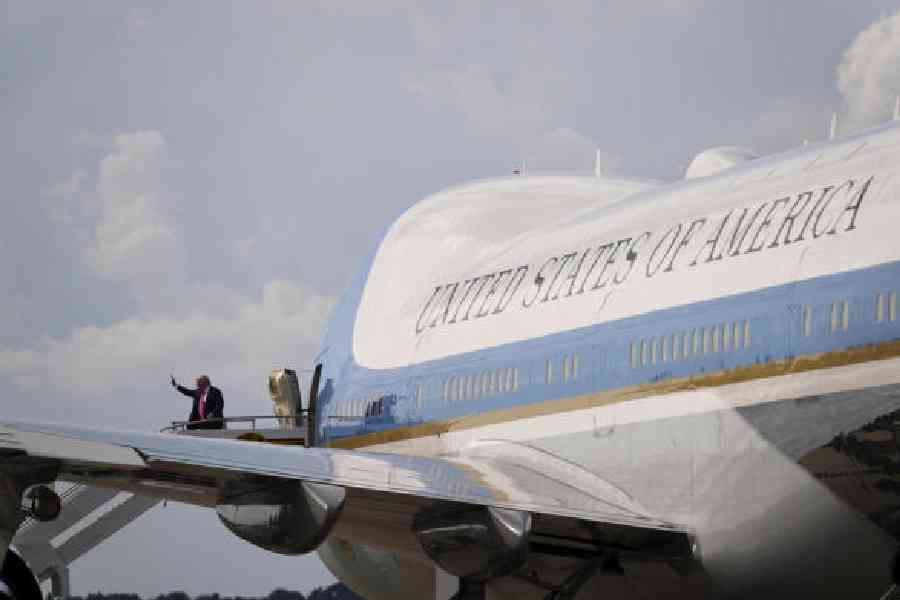President Donald Trump makes no secret of his displeasure over the cost of renovating the Federal Reserve headquarters — around $2.5 billion, or even higher by the President’s accounting.
But getting the White House to discuss another of Washington’s expensive renovation projects, the cost of refurbishing a “free” Air Force One from Qatar, is quite another matter.
Officially, and conveniently, the price tag has been classified. But even by Washington standards, where “black budgets” are often used as an excuse to avoid revealing the cost of outdated spy satellites and lavish end-of-year parties, the techniques being used to hide the cost of Trump’s pet project are inventive. Which may explain why no one wants to discuss a mysterious, $934 million transfer of funds from one of the Pentagon’s most over-budget, out-of-control projects — the modernisation of America’s ageing, ground-based nuclear missiles.
In recent weeks, congressional budget sleuths have come to think that amount, slipped into an obscure Pentagon document sent to Capitol Hill as a “transfer” to an unnamed classified project, almost certainly includes the renovation of the new, gold-adorned Air Force One that Trump desperately wants in the air before his term is over. (It is not clear if the entire transfer will be devoted to stripping the new Air Force One back to its airframe, but Air Force officials privately acknowledge dipping into nuclear modernisation funds for the complex project.)
Qatar’s defence minister and defence secretary Pete Hegseth signed the final memorandum of understanding a few weeks ago, paving the way for the renovation to begin soon at a Texas facility known for secret technology projects. The document was reported earlier by The Washington Post.
Trump’s plane probably won’t fly for long: It will take a year or two to get the work done, and then the Qatari gift — improved with the latest communications and in-flight protective technology — will be transferred to the yet-to-be-created Trump presidential library after he leaves office in 2029, the President has said.
Concerns over the many apparent conflicts of interests involved in the transaction, given Trump’s government dealings and business ties with the Qataris, have swirled since reports of the gift emerged this spring. But the President himself said he was unconcerned, casting the decision as a no-brainer for taxpayers. “I would never be one to turn down that kind of an offer,” the President said in May. “I mean, I could be a stupid person and say, ‘No, we don’t want a free, very
expensive airplane.’”
It is free in the sense that a used car handed over by a neighbour looking to get it out of his driveway is free. In this case, among the many modifications will be hardened communications, antimissile systems and afterburners to take the President quickly to safety as one of the older Air Force Ones did on September 11, 2001, when Al Qaeda attacked the US. And there is the delicate matter of ridding the jet of any hidden electronic listening
devices that US officials suspect may be embedded in the walls.
Then, of course, it has to be stuffed with the luxuries — and gold trim — with which the 47th President surrounds himself.
The jet’s upper deck has a lounge and a communications centre, while the main bedroom can be converted into a flying sick bay in a medical emergency.
So it’s no surprise that one of Washington’s biggest guessing games these days is assessing just where the price tag will end up, on top of the $4 billion already being spent on the wildly-behind-schedule presidential planes that Boeing was supposed to deliver last year. It was those delays that led Trump to look for a gift.
Air Force officials privately concede that they are paying for renovations of the Qatari Air Force One with the transfer from another the massively-over-budget, behind-
schedule programme, called the Sentinel. That is named for the missile at the heart of the US’s long-running effort to rebuild America’s ageing,
leaky, ground-launched nuclear missile system.
New York Times News Service

